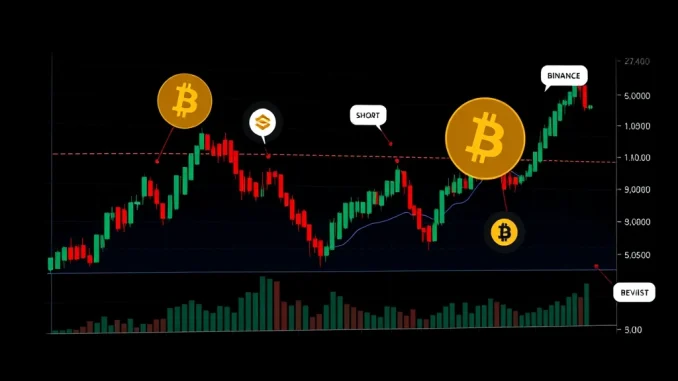
For anyone deeply involved in Bitcoin trading, understanding the pulse of the market is absolutely crucial. One of the most watched indicators for this is the long-short ratio, especially within the dynamic world of BTC perpetual futures. This metric provides a snapshot of trader sentiment, showing whether more participants are betting on price increases (long) or decreases (short) over a specific period.
Understanding the Long-Short Ratio in Bitcoin Trading
What exactly is the long-short ratio, and why does it matter for Bitcoin trading? Simply put, it compares the total volume or number of long positions versus short positions on a trading platform or across the market. A ratio above 1 suggests more traders are long, indicating bullish sentiment. A ratio below 1 means more traders are short, pointing towards bearish sentiment. Observing this ratio on BTC perpetual futures markets, which are popular for leveraged trading, offers valuable insights into how aggressive traders are positioned.
Recent BTC Perpetual Futures Data: What the Numbers Show
Let’s look at the recent 24-hour data for BTC perpetual futures long-short ratios across several major cryptocurrency exchanges. This specific dataset gives us a fresh perspective on where sentiment stood over that period.
The aggregate data across these platforms indicates a market that is remarkably balanced:
- Total Market: Long 50.04%, Short 49.96%
This near 50/50 split suggests a moment of indecision or equilibrium in the broader market sentiment among futures traders.
Divergent Views: Exchange Data Insights
While the overall picture shows balance, looking at individual exchange data reveals some interesting differences in trader positioning:
- Binance: Long 50.97%, Short 49.03% – Traders here leaned slightly bullish.
- OKX: Long 46.16%, Short 53.84% – A clear majority of traders on OKX were positioned short.
- Bybit: Long 49.66%, Short 50.34% – Bybit traders were almost perfectly split, with a slight short bias.
These variations between platforms can be influenced by various factors, including the user base demographics of each exchange, specific trading competitions, or even different liquidation engine mechanics. The significant short positioning on OKX, contrasted with the slight long bias on Binance, highlights that sentiment isn’t uniform across all venues handling crypto futures.
Using Crypto Futures Data for Market Sentiment
Analyzing data from crypto futures markets, like the long-short ratio, is a tool many traders use to gauge potential market movements. While not a crystal ball, a sudden skew in the ratio can sometimes precede volatility. For example, an extremely high long ratio might suggest the market is getting overly optimistic and could be due for a correction (a ‘long squeeze’), while an extremely high short ratio could signal potential for a bounce (a ‘short squeeze’). The current data, however, points to a relatively balanced state, albeit with exchange-specific nuances.
Conclusion
The latest 24-hour look at BTC perpetual futures long-short ratios shows a market hanging in a delicate balance overall. While the aggregate numbers hover around 50/50, diving into specific exchange data reveals pockets of differing sentiment, particularly the notable short positioning on OKX compared to the slight long lean on Binance. For those engaged in Bitcoin trading, keeping an eye on this crucial metric across different platforms can provide valuable context, but remember it’s just one piece of the complex market puzzle.



